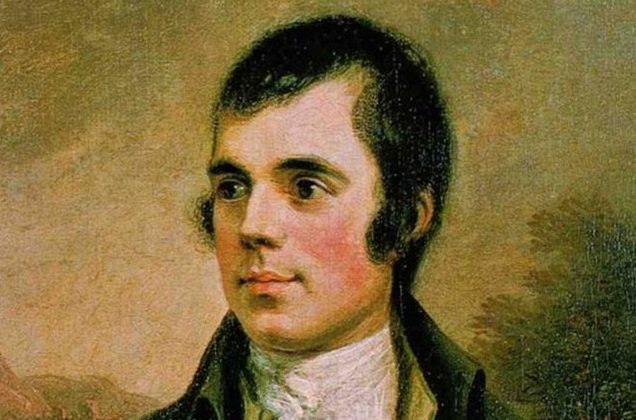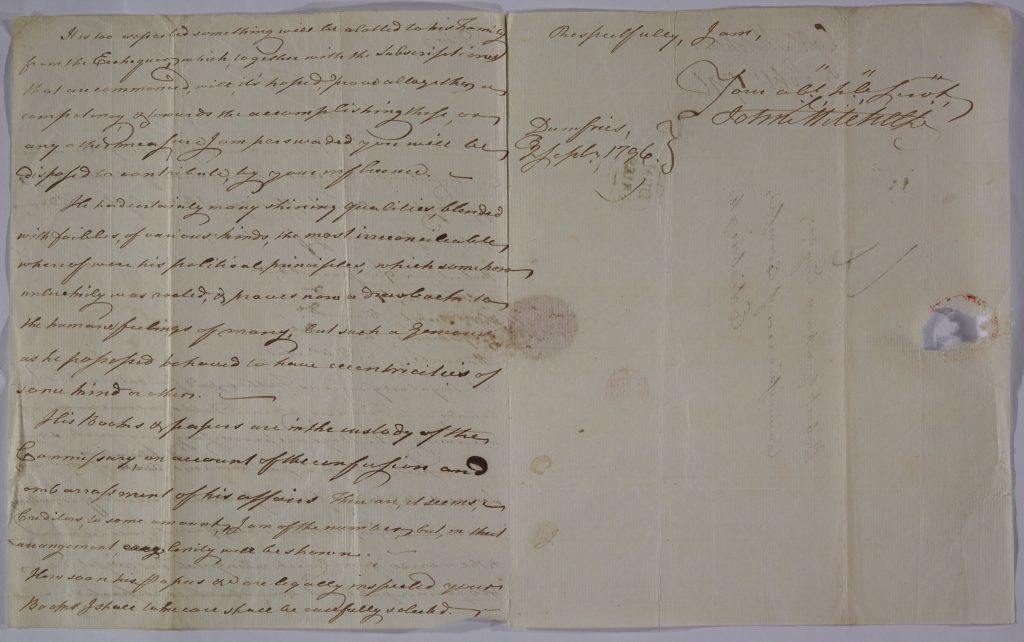
ROBERT BURNS’ boss said the Bard possessed genius as well as “foibles of various kinds”, a recently identified letter has revealed.
Letters from John Mitchell, who was the head of the Excise Collection at Dumfries when the poet worked there, have been put on show for the first time in Edinburgh.
These were sent to one of the poets most important patrons, Robert Graham of Fintry and the first, which was written in 1789 reveals the Bard “stood with Eyes and hands, directed upwards, in an attitude Poetically fancifull [sic]” when he learned he had been appointed as an exciseman.
The second document, which was penned seven years later, makes arrangements for providing for Burns’ family after his death, with Mr Mitchell highlighting the poet’s radical tendencies.
He wrote: “He had certainly many shining qualities, blended with foibles of various kinds, the most irreconcilable whereof were his political principles, which somehow unluckily was rooted, and proves now a drawback to the humane feelings of many, but such a Genious [sic] as he possessed behoved to have eccentricities of some kind or other.”
The letters, together with a rare document in Burns’ own hand writing, have gone on show at General Register House as part of a free exhibition titled Robert Burns: Radical Exciseman – which runs from Burns Night on January 25 through to February 23
International Development Minister Alasdair Allan said: “These newly-identified documents on display at National Records of Scotland shed a fresh ray of light on Robert Burns, his character, his beliefs and his career.
“I would urge people to celebrate Burns Night by finding out more about the Bard at this fascinating exhibition.”
Dr David Brown, head of court, legal and private records at the National Records of Scotland (NRS) stated: “This is a rare opportunity to see documents about Robert Burns written by those who knew him, as well as a document in the poet’s own handwriting.”
Burns expert Professor Gerard Carruthers, the Francis Hutcheson Professor of Scottish Literature at the University of Glasgow, said: “The newly discovered letters confirm Burns’s enthusiasm for the Excise service, where he found many likeminded individuals and an amenable space in which he could develop an increasing enthusiasm for political reform.
“This is the paradox of his life in this period: government service and a potentially sceptical attitude towards government.”
The documents are part of the Graham of Fintry papers, which were acquired by NRS in 2009.

Enjoy the convenience of having The Sunday Post delivered as a digital ePaper straight to your smartphone, tablet or computer.
Subscribe for only £5.49 a month and enjoy all the benefits of the printed paper as a digital replica.
Subscribe